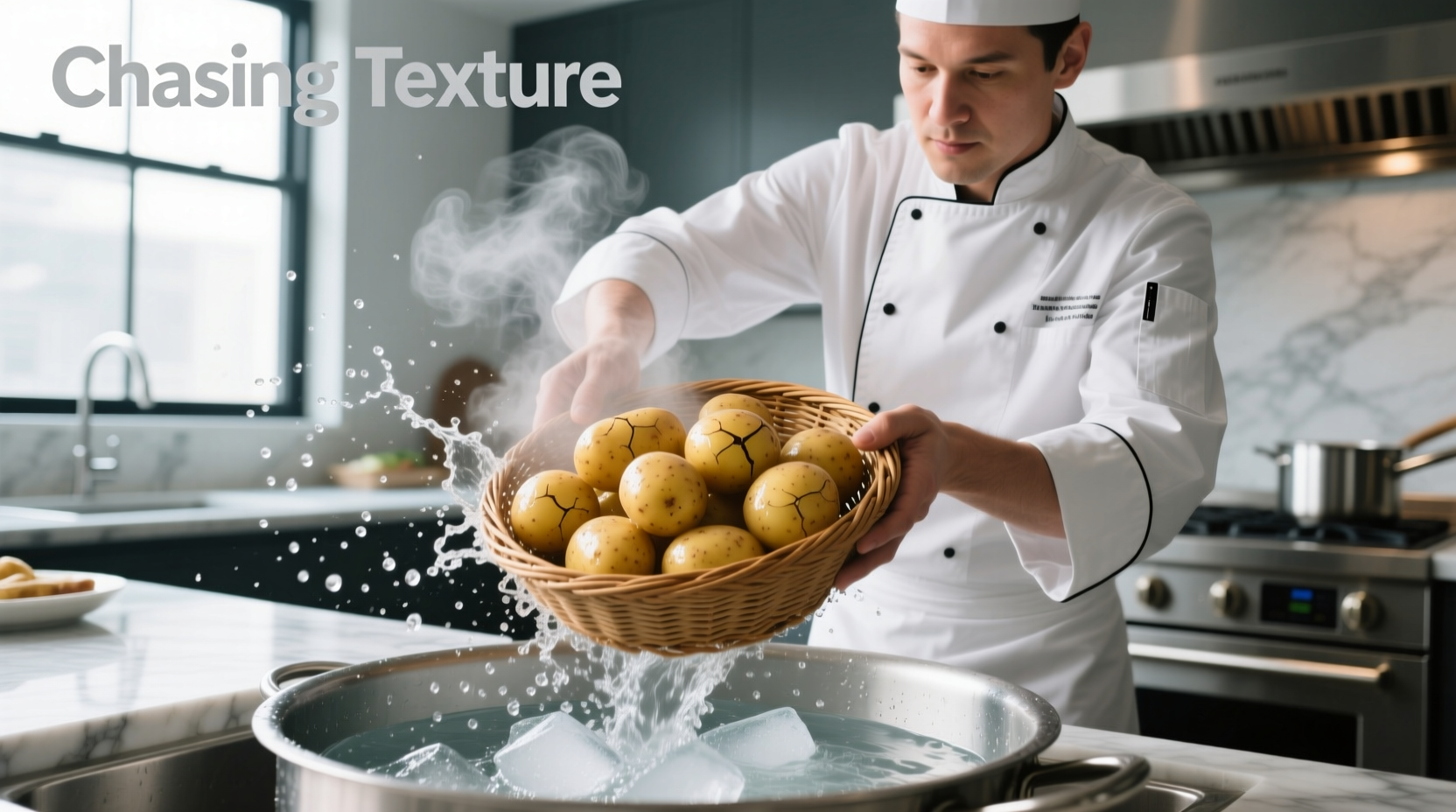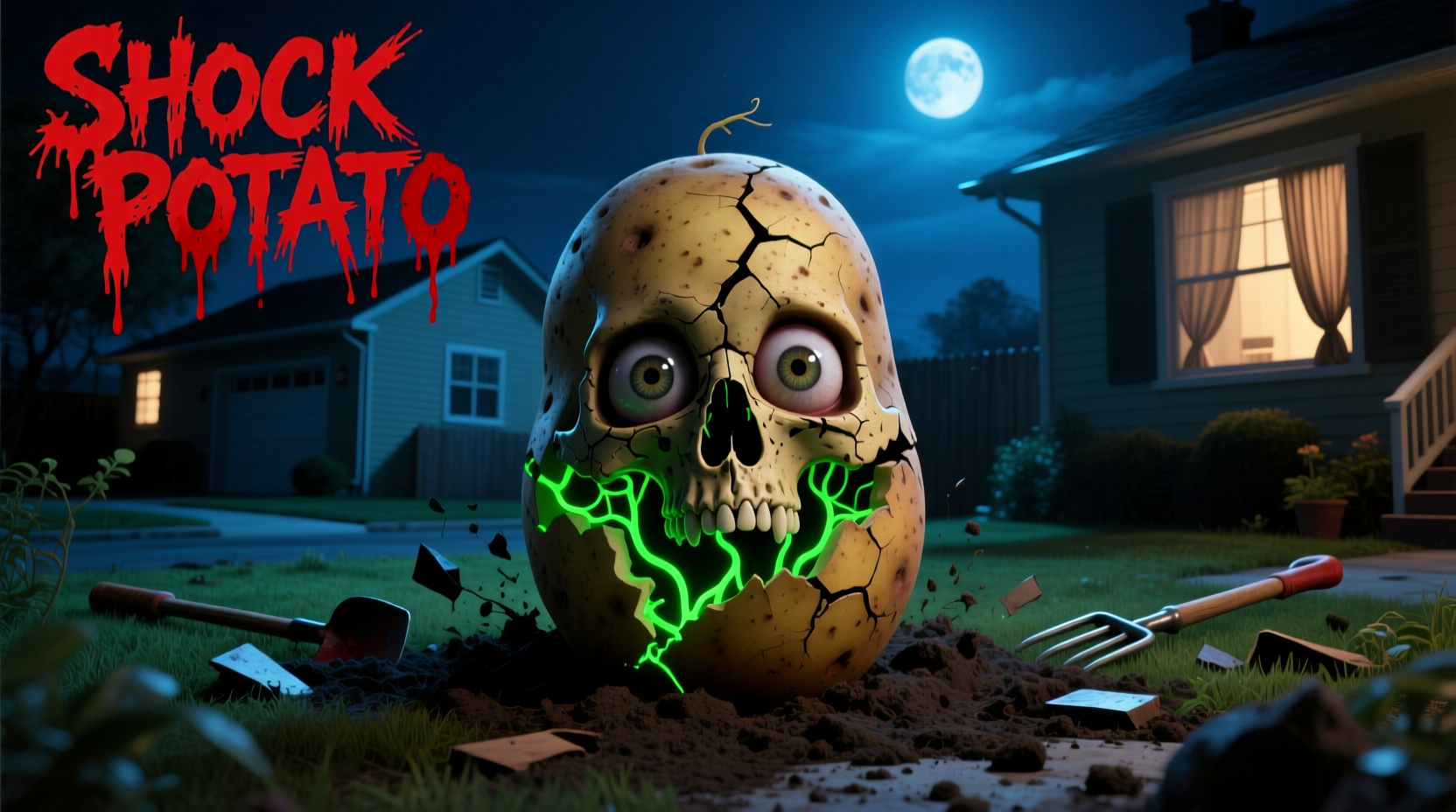Ever cut into a beautifully cooked potato only to have it crumble into mush? You're not alone. Professional chefs rely on a simple yet transformative technique called shocking to maintain ideal potato texture. This guide reveals exactly how to implement this kitchen essential, backed by food science principles and professional culinary experience.
Why Shocking Transforms Your Potato Dishes
When potatoes cook, their starch granules absorb water and swell—a process called gelatinization. Remove them from heat, and residual heat continues cooking them, often leading to undesirable softness. Shocking interrupts this process through rapid cooling.
Antonio Rodriguez, culinary expert with Michelin-starred kitchen experience, explains: "The critical window for perfect potato texture closes within 30 seconds of removing from heat. Shocking isn't just stopping cooking—it's locking in structural integrity at the molecular level."

The Professional Shocking Protocol: Step-by-Step
Follow this precise method for consistently perfect results:
- Prepare your ice bath—Fill a large bowl with equal parts ice and cold water (minimum 4 cups total for 2 lbs potatoes)
- Time your cooking—Boil potatoes until just fork-tender (typically 8-12 minutes for diced, 15-20 for whole)
- Immediate transfer—Use a slotted spoon to move potatoes directly from boiling water to ice bath
- Cool completely—Allow 5-7 minutes in ice bath (potatoes should feel cold throughout)
- Drain thoroughly—Pat dry with clean kitchen towel before use
When Shocking Matters Most: Critical Applications
Not all potato preparations require shocking. Understanding context boundaries prevents unnecessary steps:
| Best Applications | Unnecessary Applications |
|---|---|
| Classic potato salad (prevents mushiness) | Mashed potatoes (desired soft texture) |
| Meal prep components (maintains texture through storage) | Roasted potatoes (shocking disrupts caramelization) |
| Sliced potatoes for gratins (preserves structural integrity) | Purees or soups (texture breakdown is beneficial) |
Evolution of the Shocking Technique
What began as a professional kitchen secret has become essential home cooking knowledge:
- 1950s: Primarily used in French haute cuisine for consommé garnishes
- 1980s: Adopted by American bistro kitchens for potato salads
- 2000s: Popularized through cooking shows and food science publications
- Present: Standard technique in culinary schools and professional kitchens worldwide
Avoiding Common Shocking Mistakes
Even experienced cooks make these critical errors:
- Insufficient ice—Water must stay below 40°F (4°C) throughout cooling
- Delayed transfer—Every 10 seconds out of water adds 1 minute of residual cooking
- Overcrowding—Use large enough bath to maintain cold temperature
- Inadequate drying—Wet potatoes won't brown properly in subsequent cooking
Advanced Applications for Perfect Results
Professional chefs use shocking creatively:
- Texture layering—Partially cook potatoes, shock, then finish roasting for crisp exterior/tender interior
- Flavor infusion—Add herbs or citrus to ice bath for subtle flavor enhancement
- Color preservation—Prevents oxidation in waxy varieties like Yukon Gold
- Meal prep efficiency—Shocked potatoes maintain quality for 3-4 days refrigerated
Scientific Validation: The Starch Transformation
Research from the USDA Agricultural Research Service confirms that rapid cooling below 140°F (60°C) within 2 minutes halts starch retrogradation. This prevents the crystallization that leads to mealiness in improperly cooled potatoes.
Perfect Potato Shocking: Quick Reference Guide
Save this checklist for your next potato preparation:
- ✅ Ice bath ready before cooking begins
- ✅ Potatoes cut to uniform size
- ✅ Water salted properly (1.5% salinity)
- ✅ Immediate transfer to ice bath
- ✅ Complete cooling (5-7 minutes)
- ✅ Thorough drying before next step
Troubleshooting Common Issues
Solve these frequent problems with professional solutions:
- Mushy potatoes despite shocking—Overcooked before shocking; reduce boiling time by 2-3 minutes
- Waterlogged texture—Left in ice bath too long; limit to 7 minutes maximum
- Inconsistent texture—Uneven potato sizes; cut to uniform 3/4" cubes
- Poor browning after shocking—Insufficient drying; pat thoroughly with paper towels











 浙公网安备
33010002000092号
浙公网安备
33010002000092号 浙B2-20120091-4
浙B2-20120091-4